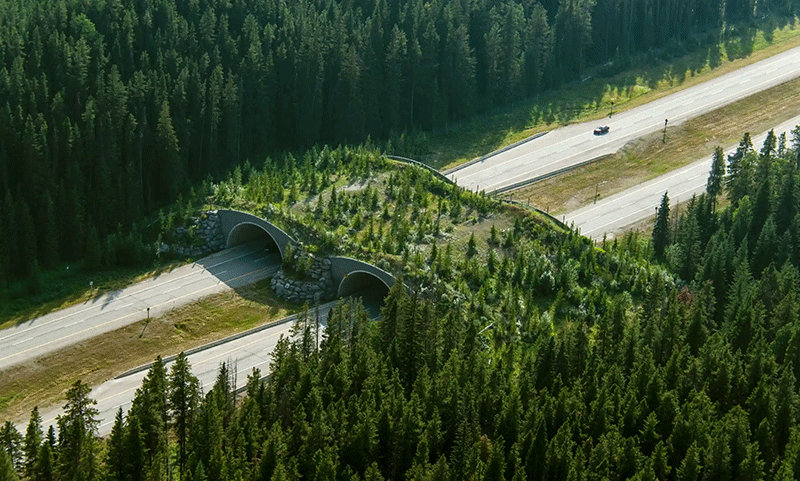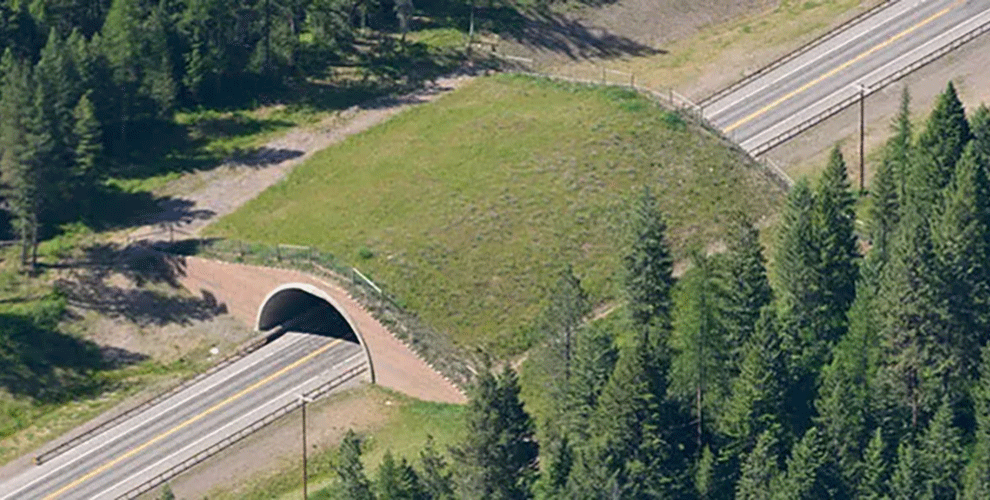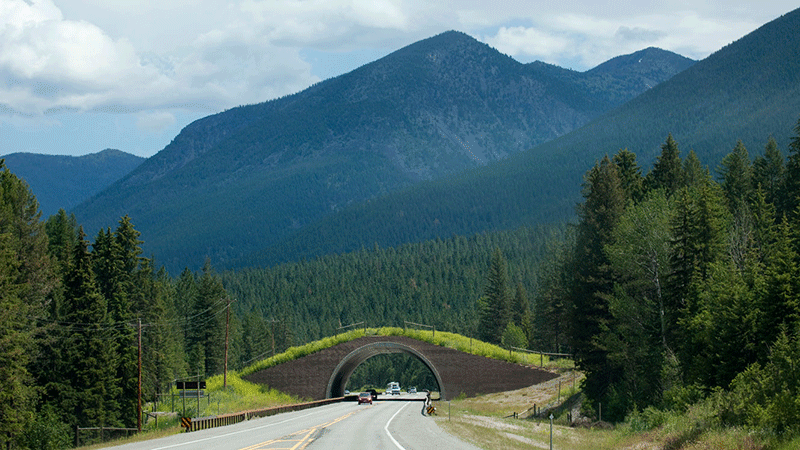It’s time to get over the roadblock and pass the Wildlife Crossings Bill. New York State can improve public safety and better protect wildlife.
A bill (S.4198/A.4243) before the NYS Legislature, sponsored by Senator Leroy Comrie and Assembly Member Robert Carroll, will direct the Department of Transportation (DOT) to identify sites along highways, thruways and parkways in the state where wildlife crossings are most needed to increase public safety and improve habitat connectivity. This bill was passed by the State Senate in April 2023, but it did not gain passage in the Assembly. Protect the Adirondacks advocated for its passage in 2023, and will continue urging the Legislature to pass the bill in 2024.
The bill requires DOT to assess roadways “in the state for potential wildlife crossings to improve wildlife habitat connectivity, reduce wildlife vehicle collisions, and increase public safety for New York motorists.” DOT will use its assessment of roadways to create a list of the top ten priority wildlife crossings sites in the state according to an established set of criteria. Additionally, for the top five project sites, DOT will also identify federal grant funds that are available for those projects.
The federal government, through Biden-Harris Administration, has made $350 million dollars available for wildlife crossings as part of the bipartisan Infrastructure Law enacted in 2021. In December 2023, the federal government announced that it awarded $110 million dollars of federal funds for wildlife crossings. New York can better position itself to advantage of these available federal funds by passing the Wildlife Crossings bill.
Wildlife crossings are structures, such as overpass bridges, underpass tunnels, culverts and directional fencing, that enable wildlife to safely cross roads and other barriers. Not only will wildlife crossings help to improve public safety by reducing vehicle collisions with wildlife, they will improve the survival rate of wildlife moving throughout, and across the boundaries of, the Adirondack Park. Having safe opportunities for road crossings are critical for many species of wildlife in and around the Adirondack Park that have large territorial ranges, such as moose, deer, bear, wolves, and bobcats. In addition, foxes, fishers, martens, and other smaller species of wildlife, plus reptiles and amphibians, need safe means of passage across large roads that impact their habitat and their ability to search for food and breeding grounds.

The wildlife bridge in Banff National Park, Alberta, Canada, is one of the oldest and most successful wildlife crossing bridges in operation. Photograph: Ross MacDonald/Banff National Park.
One of the most successful wildlife overpass projects is the Banff National Park, Alberta, Canada, on the Trans-Canada Highway. This overpass is one of dozens of overpasses and underpasses on the highway. A 2014 study found that this project was helpful to maintaining the health of wildlife populations by not artificially separating populations. This Banff wildlife bridge has been in operation for more than 20 years. Another highly successful example of use of a variety of wildlife underpasses and overpasses is on US Route 93 in Montana. Along this highway there are 122 wildlife travel accommodations, including fencing that channels wildlife travel patterns to overpasses and underpasses. More than half of the wildlife facilities are on the section of US Highway 93 that passes through the Confederated Salish and Kootenai Tribal lands. The tribes insisted on these facilities, which after they were developed, and were proved successful, were used in other areas of the highway outside the reservations. One study that looked at 15 underpasses on Highway 93 found two dozen animal species used them. Automobile-wildlife collisions have also dropped dramatically on this section of highway.
Safe crossings that allow wildlife to travel from one location to another is even more important as climate change continues to impact natural habitats and drives wildlife migration, mostly in a north-south direction. One key roadway that needs to be prioritized for wildlife crossings, even though it prevents wildlife travel in an east-west direction, is the Adirondack Northway (I-87) because of its high rate of travel, and its dissection of the Adirondack Park from critical habitat in the northeast. There are a couple of existing crossings under the Northway, such as in the area north of Schroon Lake, but these were installed decades ago and are undersized and underutilized. New, properly designed crossings over and under the Northway are needed to allow for adequate wildlife movement.
Montana pictures courtesy of the Montana Department of Transportation.







